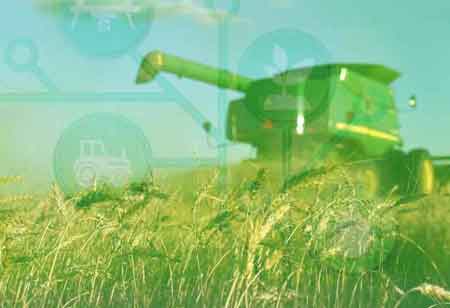Thank you for Subscribing to Agri Business Review Weekly Brief
Implementation and Management Costs for IoT in Agriculture
IoT in agriculture enhances productivity and precision by integrating connected devices for data and resource optimization. These expenses are essential to fully leveraging IoT's benefits and achieving successful implementation.

By
Agri Business Review | Wednesday, September 25, 2024
Stay ahead of the industry with exclusive feature stories on the top companies, expert insights and the latest news delivered straight to your inbox. Subscribe today.
IoT in agriculture enhances productivity and precision by integrating connected devices for data and resource optimization. These expenses are essential to fully leveraging IoT's benefits and achieving successful implementation.
FREMONT, CA: Adopting Internet of Things (IoT) technology in agriculture has transformed farming practices by integrating connected devices into daily operations. This advancement enables precision agriculture, allowing farmers to make informed, data-driven decisions, optimize resource usage, and boost productivity. Here are some of the essential costs to consider when implementing IoT technology in agriculture include:
The initial setup costs encompass the investment required to acquire and deploy IoT hardware, such as sensors, actuators, and communication devices. These devices are essential for monitoring soil moisture, crop health, and weather by providing detailed insights into these factors. IoT technology enables precise resource management, reducing water and fertilizer waste while improving crop yields. The farm's scale and the technology's complexity determine the cost. Although these initial expenses can be substantial, the long-term benefits, including increased efficiency and higher productivity, make the investment worthwhile.
Integrating IoT systems with existing agricultural infrastructure and software platforms is necessary to ensure compatibility and functionality. This integration allows for seamless control over various agricultural processes, including irrigation, pest monitoring, and climate control in greenhouses. Integration costs vary based on the complexity of the existing infrastructure and the level of customization required. Despite these costs, effective integration enhances productivity by automating processes and improving farm management. This automation leads to more efficient use of resources and better agricultural operations management.
IoT devices generate large volumes of data on soil nutrients, crop growth, and environmental conditions. Effective data management is crucial for leveraging this information to optimize farming practices. Expenses in this category include data storage, processing, and analysis, whether using cloud services or on-premises solutions. Efficient data management enables farmers to make data-driven decisions, such as adjusting irrigation schedules and reducing water usage. Proper budgeting for data management ensures that farmers can access and act on critical insights, improving farm efficiency and productivity.
Regular maintenance and support are essential to keep IoT systems operational, including routine updates, troubleshooting, and repairs to ensure the devices function correctly. For farmers, this means they can continuously monitor crop conditions and identify issues such as drought or pest infestations early. Maintenance costs can vary depending on the device type and system complexity, but timely support helps avoid costly production delays and ensures continuous operation. Effective maintenance practices are critical for sustaining productivity and optimizing farming techniques.
Investing in training for staff on how to use and manage IoT systems is vital for maximizing the technology's benefits. Training programs, workshops, and hands-on sessions help farmers and farm workers become proficient with automated tractors or drone-based crop monitoring systems. Proper training reduces human errors and ensures a smooth transition to new technologies. Farmers can optimize resource use and improve operational efficiency by enhancing staff skills and increasing crop productivity.
Protecting IoT systems from cyber threats is vital for safeguarding sensitive agricultural data, including crop performance metrics and operational schedules. Cyberattacks can disrupt IoT operations and damage monitoring and irrigation systems. Investing in security measures such as encryption, firewalls, and regular vulnerability assessments is essential for maintaining system integrity and preventing disruptions. Effective security practices help protect technological investments and ensure uninterrupted farm operations.
Ongoing operational expenses, such as energy consumption and communication costs, must be managed effectively. IoT devices facilitate continuous monitoring of variables like humidity and temperature, which are crucial for maintaining crop health. Farmers can ensure that IoT technologies contribute to improved productivity by adopting energy-efficient practices and managing communication costs without incurring excessive expenses. Proper management of these costs supports long-term sustainability and maximizes the benefits of IoT in agriculture.
Managing the costs associated with IoT technology is essential for successful agricultural implementation and delivering its intended benefits. By understanding and budgeting for these costs, farmers can fully leverage the benefits of IoT technology in agriculture, improving productivity, optimizing resource use, and enhancing farm management.





